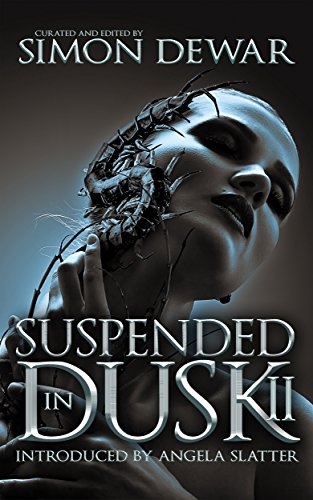Welcome back! Today’s interview is with the awesome John Linwood Grant! John is the editor at Occult Detective Quarterly, the webmaster for Greydogtales, and the author of numerous works of fiction, including his collection, The Persistence of Geraniums and Other Worrying Tales.
Recently, John and I discussed his editing work, his inspiration for his site, Greydogtales, and how he put together his collection.
A couple icebreakers to start: when did you first decide to become a writer, and who are some of your favorite authors?
 I normally try not to break ice, because I can’t swim, but if you must… it’s a story of two halves. When I was in my late twenties, I began a long process of constructing really complex novels, based on everything from Mayan mythology to medieval Islamic tolerance. This was not a great idea. I was the only one who understood what I was doing, and what I was doing did not bode well. Only one, out of the four or five novels I drafted, appeared worth pushing. And that one was deemed by a big UK publisher to be excellent but unmarketable. As in, the commissioning editor really liked it; the Marketing Department said No.
I normally try not to break ice, because I can’t swim, but if you must… it’s a story of two halves. When I was in my late twenties, I began a long process of constructing really complex novels, based on everything from Mayan mythology to medieval Islamic tolerance. This was not a great idea. I was the only one who understood what I was doing, and what I was doing did not bode well. Only one, out of the four or five novels I drafted, appeared worth pushing. And that one was deemed by a big UK publisher to be excellent but unmarketable. As in, the commissioning editor really liked it; the Marketing Department said No.
I didn’t have a lot of spare time, so I shelved most of that stuff and worked in ‘normal’ jobs for thirty years. Trying another novel seemed like too much hard work. Then someone persuaded me that short stories and novellas might be a more productive route. I sold the first story immediately, at the age of 58. Then a novella, ‘Study in Grey’, was taken up straight away, and almost every other short I wrote sold, in fact. Go figure, I believe people say.
My favourite authors? Too hard. The poetry of Edith Sitwell, the wry works of Jerome K Jerome. Saki. Roger Zelazny and Samuel Delany; Daphne Du Maurier and C J Cherryh. I find Chinua Achebe’s books fascinating. David Sedaris, to be more up to date. I ought to spare contemporaries in the weird field, because there’s always an incestuous longing to cite authors who you like both as writers and as people. The trilogy of collections which I read more than once last year was composed of Bartlett, Padgett and Kiste (surely that should be ‘Kistett?), closely followed by a marvellous quartet of tales by J Malcolm Stewart. Purely because they offered things that resonated with me, not because there weren’t other fine works around. This year, who knows?
You are an editor at the ever-awesome Occult Detective Quarterly. How does your editing work differ from (or overlap with) your work as a writer?
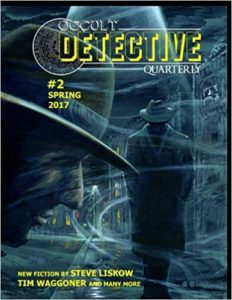 I’m not a natural editor. I’m slow and compassionate. Editors should be crisp and savage. As a writer first, I go through agonies seeing what people wanted to express in their story, and how they missed the mark. I get submissions that I would rewrite entirely just to get over a genuinely original idea that someone’s come up with, and not quite got there. I should never be allowed to edit anything. Occasionally I get to commission and edit something wonderful, for ODQ or an anthology project, and that makes up for it. Sort of. Editing pays even worse than writing, generally, and ODQ is one of those projects that earns me precisely nothing.
I’m not a natural editor. I’m slow and compassionate. Editors should be crisp and savage. As a writer first, I go through agonies seeing what people wanted to express in their story, and how they missed the mark. I get submissions that I would rewrite entirely just to get over a genuinely original idea that someone’s come up with, and not quite got there. I should never be allowed to edit anything. Occasionally I get to commission and edit something wonderful, for ODQ or an anthology project, and that makes up for it. Sort of. Editing pays even worse than writing, generally, and ODQ is one of those projects that earns me precisely nothing.
The other curious aspect of being an editor is that you have to bring out the other writer. It’s tempting to see how you yourself might push a story up a notch, but it’s not your story. So you have to encourage them to up their game, without being an interfering ass-hole. Sometimes it works, sometimes it doesn’t. Did I tell you that I shouldn’t be an editor?
Your website, Grey Dog Tales, is a wonderful combination of book reviews, interviews, and posts about lurchers. What made you decide to start the site, and what has been the most enjoyable (or heck, even the least enjoyable) part of running it?
Greydogtales (yep, all one word, but no one ever bothers about it) is an utter nightmare which absorbs far too much time. It was pointed out to me when I Re-Emerged that I should have An Author Site. The name comes from our late grey lurcher, Jade, a rescue who was quite mad but we loved her deeply.
In practice, I got bored covering my own stuff in the first fortnight. So I decided to lose the plot and fill greydogtales with whatever occurred to me. Within a month I wrote the first ‘Lurchers for Beginners’, about the hounds themselves, which pretty much went viral. After that we spent a month on William Hope Hodgson, a major influence. And then we had some artists on, including the magnificent Sebastian Cabrol from Argentina, who became a friend and has contributed works of genius to Occult Detective Quarterly. So it turned out that it was more fun to feature other authors and artists, and do what we call signposting. If we see something cool, we signpost it. We regularly cover things like unusual late Victorian writers, folk horror and black SFF. Because they’re cool. We also try to notify people about interesting small press publications as they come up, and run the occasional opinion piece by others.
The most enjoyable part is writing long features now and then about mad subjects for no apparent reason. Like my three part piece on the true origins of the ghoul or ghul, going right back to Mesopotamian mythology, which turned out to be hugely popular. Closely followed by the fact that weird fiction/art people will give us awesome interviews, and we would have loads more of them if I had the time to follow up and get the damned things completed. The queue is scary. The least enjoyable part is that queue. We are so waaaay behind.
Your story, “The Horse Road,” which appeared in Lackington’s, was a striking and haunting tale. What was the inspiration for this particular piece?
Thanks. My usual approach is to conceive of characters who have lives and emotions outside of, and regardless of, my writing. Then I look at recording what might happen next, almost cinematographically. ‘The Horse Road’ is one of the results. It’s the pure core of a series I write called ‘Sandra’s First Pony’. Those stories are deliberately ludicrous blends of folk horror, Enid Blyton and H P Lovecraft. This one was different, totally serious, and is simply about a girl and her pony, gifted with mutual inter-dependence and accepting that fact. It’s partly inspired by the Yorkshire I know, the bleak moors and the potential threat of a liminal world.
On the other hand, it’s Mr Bubbles. I receive more comments on that slightly psychotic pony than I do on most of my characters, and maybe that’s because he’s a fixed point, when we have no idea where to place our trust. He is what we want, what Sandra (his constant companion) wants. Living with a powerful, somewhat mad equine who stamps on things can solve a lot of problems. He’s the antithesis of mealy-mouthed, vacillating and untrustworthy politicians.
Last year saw the release of your collection, A Persistence of Geraniums and Other Worrying Tales. What inspired you to put together this collection, and how did you decide on the final table of contents? Additionally, were there any surprises along the way as you were compiling, editing, and promoting the book?
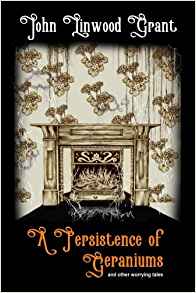 ‘Geraniums’ is, in many ways, a taster. More than half of my work concerns the theme I call ‘Tales of the Last Edwardian’. This spans from the 1880s to the present day. So it seemed like a good idea to make a start somewhere. Every story in it is connected, but sometimes the connections are incredibly loose. The difficulty was in deciding about the inclusion of Mr Dry. In the end, half of the collection is about him. I write a re-imagined but faithful and dark late Victorian/Edwardian world, and if anyone spans that period, it’s the Deptford Assassin. I was delighted when one kind reviewer recognised that he was neither hero, anti-hero nor psychopath, but something else – a human being who happens to think and work differently from us.
‘Geraniums’ is, in many ways, a taster. More than half of my work concerns the theme I call ‘Tales of the Last Edwardian’. This spans from the 1880s to the present day. So it seemed like a good idea to make a start somewhere. Every story in it is connected, but sometimes the connections are incredibly loose. The difficulty was in deciding about the inclusion of Mr Dry. In the end, half of the collection is about him. I write a re-imagined but faithful and dark late Victorian/Edwardian world, and if anyone spans that period, it’s the Deptford Assassin. I was delighted when one kind reviewer recognised that he was neither hero, anti-hero nor psychopath, but something else – a human being who happens to think and work differently from us.
This meant that ‘Geraniums’ was two collections in one – some of it supernatural, some of it about madness and murder. If I’d had the time, I might have added more stories about Dr Alice Urquhart, my alienist, and her attempts to separate insanity and the paranormal. I did at the last minute decide to include ‘Grey Dog’, a sort of deconstruction of the classic occult detective Carnacki the Ghost Finder. As with ‘Horse Road’ it’s not a pastiche or parody, but a completely serious reverie on life and the presence of death.
Ideally, the collection would also have included Mamma Lucy, but again, time. The ornery 1920s black hoodoo-woman is a natural extension of what comes before, and of terrible events in the early twentieth century. She embodies a different way of facing inhumanity, but she’ll have to wait.
Do you have any writing rituals, such as writing to music or writing at a specific time of day?
Not a one. I write near the back door, so I can let the dogs in and out, and that’s about it.
Out of your published fiction, do you have a personal favorite?
‘Grey Dog’ certainly. ‘Messages’, from the Cthulhusattva anthology, my challenge to classic Lovecraftian tropes, which involves a mother and daughter who have made choices. Strange, yet fully informed, choices. They represent a way of being which is understandably human, and also incomprehensible – or I hope they do. Though I particularly enjoyed one reader’s dismissal of them as ‘the good guys’, after they had driven people to insanity, been satisfied with the extermination of an entire civilisation, and if allowed to continue, would seek the extinction of all life in the Universe. ‘Good’ is a relative term, I suppose.
And I have a fondness for ‘The Jessamine Garden’, which was in the Lambda-award winning anthology ‘His Seed’. It was pointed out to me afterwards that it relates directly to Hawthorne’s ‘Rappacini’s Daughter’ – a connection I’d missed at the time, as I’d actually been contemplating how many of the plants in our own garden were toxic. I wondered if someone might find a purpose in that, beyond simply poisoning everyone who annoyed them.
What projects are you currently working?
I’m almost finished with my new novel ‘The Assassin’s Coin’. It’s an accident, a chance suggestion by writer and artist Alan M Clark. He noticed an aside in ‘Geraniums’, and wondered if I might take it further. So I did, and started risking long fiction again. It concerns a brash young psychic with an unreliable gift, Catherine Weatherhead, and her unwilling entanglement with Edwin Dry, the Deptford Assassin.
Barring the occasional presence of Mr Dry, the book is almost completely about the women of the 1880s. It’s also a dismissal of Jack the Ripper, a negation of the importance of a pathetic, disturbed individual who killed women unable to defend themselves. There have been many men like that before him, and many after, sadly. I’ve no time for the mythologising about him, and ‘The Assassin’s Coin’ will tell you what I think. Alan is writing a complementary novel called ‘The Prostitute’s Price’, and the plan is to issue them separately at first, but later as a single volume of interlaced chapters. I think we should go the whole hog and print alternative words from each book, just to see if any passages still made sense.
Otherwise, I’ve recently completed a novelette which is a sequel to (and complete rewriting of) Arthur Conan Doyle’s ‘The Musgrave Ritual’; ODQ Presents, an anthology of longer supernatural fiction by some cool folk; a weird novelette of sculpture and artists in the 1970s, and the anthology ‘Hell’s Empire’, the Prince of Darkness versus Victorian Britain. An anthology for which I’ve had some truly surprising submissions, subtle, complex and moving. I’m a touch excited about it.
I also have about seven short stories under construction, but that’s how I pay for dog food. The chicken carcasses must flow…
Where can we find you online?
Greydogtales.com, usually updated once a week or more. And I’m on Facebook a lot, and post much nonsense there. It’s a scribble-pad for what’s going on with me (or the pups).
Big thanks to John Linwood Grant for being part of this week’s author interview series!
Happy reading!
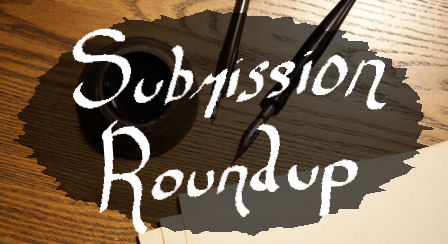 FIYAH
FIYAH



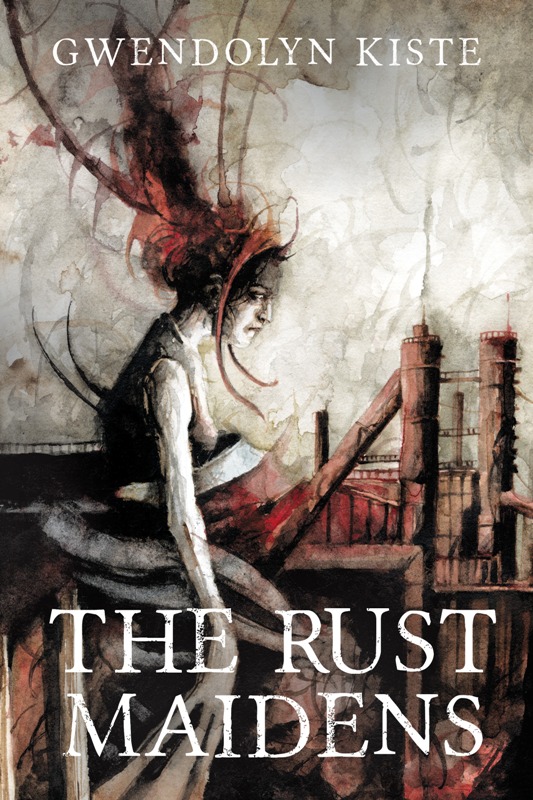
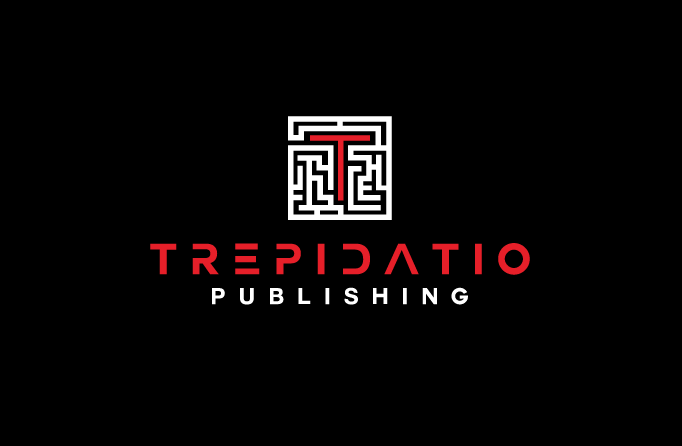 The Rust Maidens
The Rust Maidens